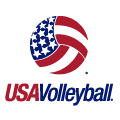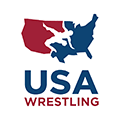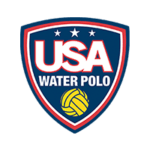How to Get Recruited for Women’s Lacrosse

Being recruited for college lacrosse is about more than just an athlete’s success in the field. College coaches want to fill their roster spots with well-rounded student-athletes who dedicate themselves to success both on the field and in the classroom. With fewer opportunities to play Division 1 and 2 lacrosse, compared to the large number of Division 3 lacrosse programs, student-athletes must compete for their spot on the roster by showing they are the top talent, a strong student and a clear communicator with college coaches during the recruiting process. We’ve created this guide to help student-athletes better understand how to get recruited for college lacrosse.
Quick Links
The NCAA prohibits communication between D1 college coaches and student-athletes before September 1 of their junior year. This means student-athletes and D1 college coaches cannot engage in any form of off-campus communication, including phone calls, text messages and email communication. Of course, this does not mean that student-athletes cannot prepare for the official start of the recruiting process prior to September 1. As soon as freshman year, student-athletes can begin to research potential schools, create a recruiting profile with highlight video and player stats, schedule unofficial visits, participate on a club lacrosse team and complete questionnaires. With all of these aspects of the recruiting process completed, student-athletes can spend time nurturing their relationship with college coaches once communication between the two can begin on September 1 of their junior year.
There are no restrictions on when student-athletes can reach out to college coaches at the NCAA Division 2 and 3 levels, as well as NAIA and NJCAA.
Determine what division level you are best suited for in college lacrosse
Student-athletes who wish to play women’s college lacrosse will have to find ways to stand out from the over 96,000 female US high school lacrosse players. College coaches at each division level are looking for student-athletes who have a high lacrosse IQ, are versatile and show strong athleticism. Outside of these three core factors, coaches also want a student-athlete who excels in the classroom and demonstrates the ability to successfully balance academics and athletics. To determine at what level a student-athlete is best suited to play in college, they should ask their high school or club coach to evaluate their skills and research the skills of current team members at colleges they are interested in. Learn more about what college coaches are looking for at each level on our recruiting guidelines page.
Find and attend girls lacrosse camps
With the majority of women’s college lacrosse programs located in the Northeast region, it’s important that student-athletes across the country take advantage of opportunities to play in front of coaches. Lacrosse recruiting camps are one opportunity that gives student-athletes access to college coaches and the chance to showcase their skills. College coaches take this opportunity to evaluate student-athletes and identify those they wish to recruit. We’ve created a tool to help student-athletes find the right lacrosse camp to attend and get the exposure they need during the recruiting process.
Do I need to make a lacrosse recruiting video?
The simple answer is, yes. A well-made recruiting video is a critical aspect of a student-athlete’s recruiting profile. Why is it so important that student-athletes make a recruiting video? A three to four-minute recruiting video is a quick way to introduce a student-athlete to college coaches and demonstrate what skills they bring to the table. Below are a few video tips to keep in mind when creating your recruiting video:
- Capture footage from varsity or club games.
- Shoot from the stands or a press box to create an elevated perspective.
- College coaches need to be able to distinguish the jersey numbers, foot skills and technical ability of the primary athlete.
- Show the progression of play by shooting with a wide enough angle.
- Footage should be shot using a tripod for stability and ease.
For more tips and breakdown of what each position should include, visit our highlights video section.
Finding potential colleges
Finding potential colleges starts with first understanding what division level the student-athlete is best suited to play at. This doesn’t just mean evaluating their athletic skill level, but looking beyond athletics to their academic standing, ACT/SAT test scores and financial requirements. Once an athlete understands what division this combination of factors lands them, they can begin their search for the right college fit. To make the college search less daunting for student-athletes, we’ve created the NCSA Power Rankings, which rank the best colleges based on various factors, including, academics, size, cost and location.
Contacting lacrosse coaches
After a student-athlete has created a list of prospective schools that they believe are the best fit academically, athletically, socially and financially, it’s time to start making connections with college coaches. Student-athletes should both call and email college coaches to introduce themselves and express interest in their lacrosse program. Once an athlete has made this initial contact, they should work with their high school and/or club coach to see how they can help the athlete further develop a relationship with college coaches.
Student-athletes looking to play at the NCAA Division 1 level will need to wait until September 1 of their junior year before they can begin contacting college coaches, but students can contact Division 2 and 3, NAIA and NJCAA coaches at any time.
How to write a recruiting letter to a lacrosse coach
Once a student-athlete is ready to start contacting coaches, they need to know how to write a recruiting letter. First, athletes should start with a subject line that immediately grabs the coach’s attention. We suggest leading with numbers and stats, such as your ACT score, position, graduation year, height and weight, etc. Remember, college coaches receive many emails from prospective students, so athletes need to find a way to make their email stand out in the coach’s inbox.
Next, it’s time to write out the body of the email. All introductory emails should begin with why the student-athlete is interested in the lacrosse program or an interesting fact about the team that drew them to the program. Then, the student-athlete should explain why they are a good fit for the team and program overall. College coaches will also want the following basic information about the athlete:
- General information: Name, graduation year, high school and club name
- Academics: GPA, test scores
- Athletics: sport specific stats and relevant measurables
- Contact information: phone number and email, as well as your club and high school coach contact info
End the email with clear next steps, whether that be a specific time the coach should expect a call from the student-athlete or an invitation to watch the athlete compete at a tournament or game.
The role of high school and club coaches
High school and club coaches can play a pivotal role in the college recruiting process, in ways beyond simply coaching to improve the student-athlete’s abilities. Below we outline three ways that high school and club coaches can aid student-athletes during the recruiting process.
Create connections
Over the years, high school and club coaches develop solid relationships with college coaches and programs. After a student-athlete builds out their list of prospective schools, they should ask their coach if they have any connections to programs. If a coach does have a connection to one or more of the programs, they can facilitate an introduction between the student-athlete and college coaches.
Provide feedback
Student-athletes cannot create a realistic list of prospective schools unless they understand what division level would be best for them. When looking to assess their skill level, student-athletes should ask their high school and/or club coaches to evaluate their skillset and provide feedback regarding what division level they feel the athlete’s talent and athleticism is best suited. Using this valuable insight from their coach, student-athletes can create a realistic list of prospective schools.
Recommendations
As a result of the strong relationship between lacrosse coaches at the college and high school levels, college coaches will often reach out to high school and club coaches to inquire about a recruit. These coaches will be asked to comment on a student-athlete’s talent, character, work ethic and attitude, and how they respond can have a significant impact on the recruiting process. If a student-athlete is being recruited by one or more schools, they should notify their coach, so they are prepared to provide more information and recommendations to any college coach that reaches out.
Types of Division 1 and 2 lacrosse offers
- Athletic Scholarship Offer – Like many NCAA sponsored sports, lacrosse is an “equivalency sport”. This means each program is given a scholarship budget that the coach uses to award athletic scholarships to prospective students. Because the scholarship budget for women’s lacrosse is relatively small, college coaches typically award partial scholarships to cover the cost of tuition, room and board, books and other fees.
- Recruited Walk-On Offer (Preferred) – Student-athletes who do not receive a scholarship, can still be offered a spot on the roster as a preferred walk-on offer. Preferred walk-on offers are granted to athletes who college coaches have been recruiting, but do not have the funds to offer them financial aid. After the student-athlete’s first year of college, college coaches can reconsider the athlete for an athletic scholarship.
- Unrecruited Walk-On – Aside from a preferred walk-on offer, student-athletes can be awarded a spot on the team as an unrecruited walk-on. This offer requires the student-athlete to try out for the team.
What to expect at women’s college lacrosse walk on tryouts
Walk-on tryouts are held for student-athletes who were not initially offered a roster spot on a Division 1 team. During tryouts, college coaches look for athletes who will challenge their teammates in practice and help the team’s top athletes grow as competitors. To stand out during walk-on tryouts, student-athletes need to bring their ‘A’ game. Coaches want athletes who respond well to criticism, demonstrate great sportsmanship and show promising talent.
How to get recruited for D1 women’s lacrosse in college
NCAA D1 programs typically recruit the top five percent of high school talent, which means getting recruited at a D1 program is no easy task. Student-athletes must sacrifice a great deal of time to train and develop the skillset that D1 college coaches look for when recruiting. This sacrifice requires athletes to train more than ten hours per week with a notable club team led by a staff of well-connected coaches who not only develop their talent, but also help these athletes connect with D1 college coaches.
Student-athletes should create a recruiting profile where college coaches can review their stats and highlight video. Once a student-athlete builds their recruiting profile, they should begin reaching out to college coaches with an introductory email to share their interest in the lacrosse program and begin building a relationship with the coach. Student-athletes should also attend showcases and prospect camps to increase their visibility and access to D1 college coaches.
College coaches evaluate more than just a student-athlete’s athletic ability, they also want athletes who are well-rounded. During the recruiting process, student-athletes should remain focused on their academic success to give themselves the best chance of making a D1 lacrosse roster.
Learn more about Division 1 women’s lacrosse colleges.
Understanding academic requirements for college lacrosse
Student-athletes should start thinking about their academic eligibility starting freshman year. Athletes are encouraged to set academic goals for themselves to ensure that they meet the eligibility standards to compete at the collegiate level. The NCAA, NAIA and NJCAA all have different eligibility requirements that student-athletes must meet in order to play college lacrosse. Visit our page on academic eligibility requirements to learn how to become eligible for the NCAA, NAIA and NJCAA.
















